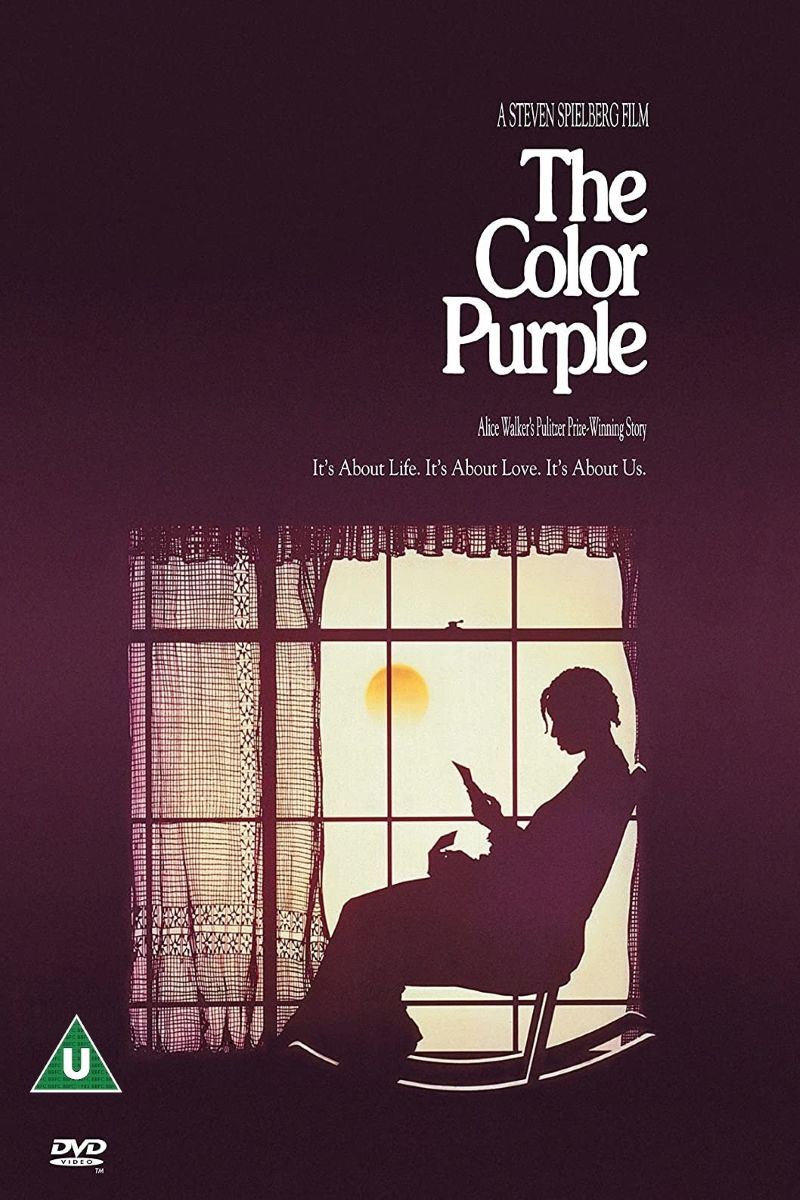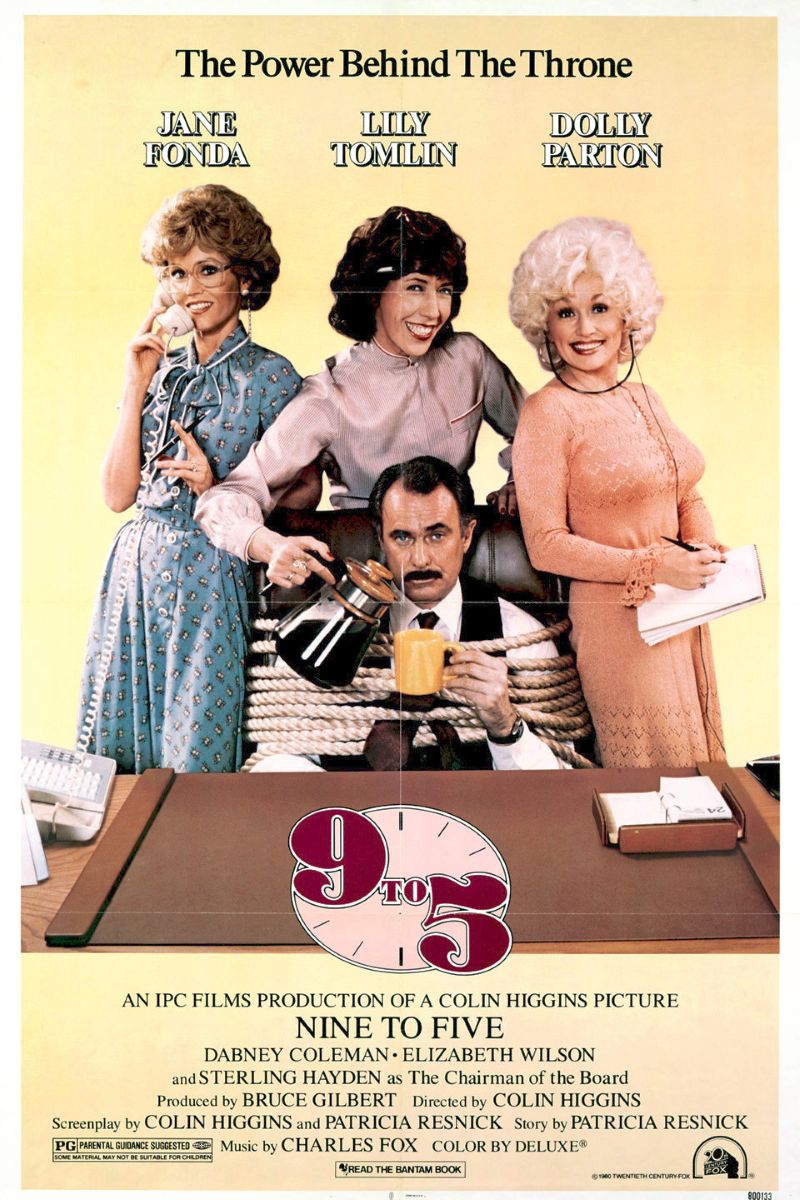
The Color Purple
The Color Purple
Whoopi Goldberg brings Alice Walker's Pulitzer Prize–winning novel to life as Celie, a Southern Black woman who has suffered abuse for decades. A project brought to a hesitant Steven Spielberg by producer Quincy Jones, the film was the director's first with a female lead.
Cast
Related Topics
🎥 Film Analysis & Review
Steven Spielberg’s “The Color Purple” stands as a monumental achievement in American cinema, transforming Alice Walker’s Pulitzer Prize-winning novel into a sweeping epic that explores the intersection of race, gender, sexuality, and spiritual awakening in the early 20th-century American South. Despite initial controversy surrounding its adaptation and the choice of a white male director for this deeply Black feminist narrative, the film emerged as a powerful testament to female resilience, sisterhood, and the transformative power of love and self-discovery. Through extraordinary performances from Whoopi Goldberg, Oprah Winfrey, and Margaret Avery, the film created space for Black women’s stories in mainstream Hollywood while grappling with complex themes of abuse, healing, and empowerment that continue to resonate with contemporary audiences.
Groundbreaking Adaptation and Directorial Challenge
The adaptation of Alice Walker’s epistolary novel presented unprecedented challenges for mainstream Hollywood, which had rarely attempted to center Black women’s experiences or address themes of domestic violence, sexual abuse, and lesbian relationships within African American communities. Spielberg’s involvement, initially met with skepticism from both critics and activists who questioned whether a white director could authentically represent Black women’s stories, ultimately proved transformative for his own artistic development and Hollywood’s approach to diverse narratives.
Producer Quincy Jones’s advocacy for the project demonstrated the crucial role of influential Black voices in bringing marginalized stories to mainstream platforms. His ability to convince Spielberg to undertake this departure from his typical adventure and fantasy films resulted in the director’s first female-centered narrative and his most emotionally complex work to that point in his career.
The film’s eventual success, despite winning no Academy Awards from its eleven nominations, proved that audiences were hungry for stories about Black women’s experiences when told with authenticity, respect, and artistic integrity. This commercial and critical validation opened doors for subsequent films exploring similar themes and demonstrated the economic viability of diverse storytelling in mainstream cinema.
Revolutionary Performances and Star-Making Power
Whoopi Goldberg’s portrayal of Celie represents one of cinema’s most transformative character arcs, tracing her evolution from an abused, silenced child to a confident woman who discovers her voice, sexuality, and spiritual strength. Goldberg’s performance captures both the devastating impact of systematic abuse and the gradual awakening of self-worth that occurs through relationships with other women who model different ways of being in the world.
Oprah Winfrey’s debut performance as Sofia provides a crucial counterpoint to Celie’s initial passivity, embodying Black feminine strength and resistance that refuses to accept mistreatment from anyone. Sofia’s journey from defiant fighter to broken woman to renewed activist illustrates how systemic racism and sexism work to destroy Black women’s spirits while also revealing the sources of strength that enable survival and resistance.
Margaret Avery’s Shug Avery emerges as the film’s most complex character, simultaneously representing sexual liberation, artistic expression, and spiritual guidance while challenging conventional moral categories through her relationships with both men and women. Her mentorship of Celie demonstrates how women can serve as catalysts for each other’s awakening and empowerment across different backgrounds and life experiences.
Controversial Representation and Community Response
The film’s release generated intense debate within African American communities about representation, authenticity, and the politics of having Black stories told by white filmmakers. Critics argued that Spielberg’s direction softened Walker’s more radical feminist themes while perpetuating negative stereotypes about Black men through its portrayal of abuse and violence within Black families.
These criticisms reflected broader tensions within Black communities about how to balance honest examination of internal problems with protection against external stereotyping and racism. The NAACP’s criticism of the film’s “stereotypical portrayals of black males” highlighted concerns about whether mainstream audiences would understand the specific historical and social contexts that produced the behaviors depicted rather than viewing them as inherent racial characteristics.
However, defenders of the film argued that Walker’s source material demanded honest treatment of difficult subjects including domestic violence, sexual abuse, and male dominance that affected many Black women’s lives regardless of how their portrayal might be misinterpreted by racist audiences. This debate illuminated ongoing tensions between political representation and artistic truth-telling that continue to affect discussions of Black cultural production.
Feminist Themes and Women’s Solidarity
The film’s exploration of sisterhood and women’s mutual support provides its emotional and political foundation, showing how relationships between women can serve as sources of healing, strength, and transformation even in the most oppressive circumstances. The bonds between Celie, Sofia, and Shug demonstrate different models of female strength while illustrating how women can mentor, protect, and empower each other across class and personality differences.
The film’s treatment of domestic violence avoids both victim-blaming and oversimplification by showing how abuse operates through systematic undermining of women’s self-worth, isolation from supportive relationships, and economic dependence that makes escape difficult. Celie’s gradual awakening occurs through exposure to alternative models of womanhood that help her recognize her own value and possibilities.
The integration of spiritual themes with feminist empowerment creates a distinctive approach to liberation that honors both individual growth and collective resistance. Celie’s discovery of a divine presence that transcends traditional patriarchal religious imagery provides spiritual foundation for her emerging sense of self-worth and agency.
LGBTQ+ Representation and Sexual Liberation
The film’s portrayal of the romantic and sexual relationship between Celie and Shug represented groundbreaking mainstream recognition of lesbian relationships within African American communities, challenging both homophobic attitudes and the invisibility of Black LGBTQ+ experiences in popular culture. While critics argued that Spielberg’s treatment was too subtle or sanitized compared to Walker’s novel, the inclusion of this relationship marked significant progress for queer representation.
The film contextualizes sexual liberation within broader themes of self-discovery and resistance to oppression, suggesting that authentic sexuality emerges through relationships based on mutual respect and genuine care rather than domination and exploitation. Shug’s role as sexual mentor helps Celie discover not only her attraction to women but also her capacity for pleasure and intimate connection.
This representation occurred during a period when mainstream films rarely acknowledged LGBTQ+ relationships at all, making its inclusion particularly significant despite limitations in its development. The film’s approach influenced subsequent portrayals by demonstrating that queer themes could be integrated into mainstream narratives without requiring sensationalism or tragedy.
Economic Empowerment and Independence
The film’s attention to economic themes reveals how financial dependence reinforces other forms of oppression while showing how economic independence enables broader personal freedom and self-determination. Celie’s discovery of her inheritance from her biological father provides the material foundation for her emotional and psychological liberation, allowing her to leave an abusive marriage and establish her own business.
The development of Celie’s sewing enterprise demonstrates how creative skills can become sources of economic empowerment when women gain access to markets and business opportunities. Her success as an entrepreneur reflects broader themes about Black women’s economic agency and the importance of controlling the means of production for achieving genuine independence.
The film’s treatment of class differences among Black women—from Celie’s rural poverty to Shug’s urban sophistication—illustrates how economic resources affect women’s options and opportunities while suggesting that solidarity can bridge class divisions when based on genuine understanding and mutual support.
Historical Context and Period Authenticity
The film’s recreation of early 20th-century rural Georgia provides crucial context for understanding how racial segregation, economic exploitation, and limited educational opportunities shaped Black women’s lives during this period. The visual representation of sharecropping agriculture, segregated communities, and limited technological development helps audiences understand the material conditions that constrained characters’ choices and possibilities.
The film’s attention to period details—from clothing and architecture to transportation and communication—creates authentic atmosphere while illustrating how historical circumstances affected personal relationships and individual development. This historical grounding prevents the story from becoming timeless allegory while maintaining relevance to contemporary issues.
The integration of historical authenticity with universal themes demonstrates how specific cultural and temporal contexts can enhance rather than limit a story’s broader significance, suggesting that authentic representation requires attention to particular circumstances rather than generic treatment.
Spiritual Transformation and Religious Themes
The film’s exploration of spiritual awakening provides crucial foundation for character development while offering alternative models of religious experience that transcend conventional institutional Christianity. Celie’s evolution from dutiful religious observance to personal spiritual discovery reflects broader themes about authentic faith versus imposed religious doctrine.
Shug’s influence on Celie’s spiritual development demonstrates how relationships with other women can serve as pathways to divine connection, challenging patriarchal religious traditions that position male authority figures as exclusive spiritual intermediaries. Their conversations about God and spirituality suggest that divine presence can be accessed through love, beauty, and authentic relationships rather than institutional mediation.
The film’s integration of spiritual themes with feminist empowerment creates a distinctive approach to liberation theology that honors both individual transformation and social justice concerns while avoiding the false choice between personal spirituality and political activism.
Cinematic Achievement and Technical Excellence
Spielberg’s direction demonstrates his ability to adapt his typically kinetic visual style to serve intimate character development and emotional storytelling rather than spectacular action sequences. His use of close-ups, natural lighting, and carefully composed domestic spaces creates visual intimacy that supports the film’s focus on personal relationships and internal transformation.
The film’s cinematography, production design, and costume work create rich visual texture that enhances storytelling while avoiding both romanticization and exploitation of rural poverty. The attention to period detail serves narrative purposes while creating beautiful images that honor rather than diminish the characters’ experiences.
Quincy Jones’s musical score integrates gospel, blues, and orchestral elements to create soundscape that supports rather than overwhelms dramatic content while celebrating African American musical traditions that provide context for the characters’ cultural background and artistic expression.
Legacy and Contemporary Relevance
“The Color Purple” established crucial precedents for mainstream Hollywood’s treatment of Black women’s stories while inspiring subsequent filmmakers to explore similar themes with increasing sophistication and authenticity. Its commercial success demonstrated audience appetite for diverse narratives that addressed serious social issues without sacrificing entertainment value or emotional accessibility.
The film’s influence extends beyond cinema into broader cultural conversations about domestic violence, sexual abuse, and healing that continue to evolve as society develops more nuanced understanding of trauma and recovery. Its portrayal of women’s mutual support provides models for contemporary discussions of sisterhood and solidarity across difference.
The ongoing relevance of the film’s themes—from economic inequality and racial oppression to domestic violence and LGBTQ+ rights—demonstrates how historical narratives can illuminate contemporary struggles while honoring the specific experiences of previous generations who laid groundwork for current progress.
Conclusion: Transformation Through Truth-Telling
“The Color Purple” achieves its enduring impact through its commitment to honest examination of difficult truths about abuse, oppression, and healing while maintaining faith in human capacity for growth, love, and transformation. Despite legitimate criticisms about representation and directorial choice, the film succeeded in bringing Alice Walker’s vision to mainstream audiences while creating space for Black women’s stories in Hollywood.
The film’s greatest achievement lies in its demonstration that stories about marginalized communities can achieve both commercial success and artistic integrity when approached with respect, authenticity, and genuine commitment to honoring the experiences they represent. Spielberg’s willingness to tackle unfamiliar subject matter resulted in his most emotionally complex work while providing platform for extraordinary performances that launched careers and influenced representation.
Through its combination of intimate character development and broader social themes, “The Color Purple” remains a powerful testament to the possibility of healing from trauma through relationships based on love, respect, and mutual empowerment. Its vision of transformation through truth-telling, spiritual awakening, and women’s solidarity continues to inspire audiences seeking authentic narratives about survival, resistance, and the revolutionary power of claiming one’s own voice and story.
🏆 Awards & Recognition
- • 11 Academy Award nominations
- • Directors Guild Award Outstanding Directorial Achievement (Steven Spielberg)
- • NAACP Image Award Outstanding Motion Picture
- • Golden Globe Best Motion Picture nomination
- • BAFTA nominations
⭐ Ratings & Links
Related Recommendations
Comments & Discussion
Discuss this video with other viewers
Join the Discussion
Discuss this video with other viewers
Loading comments...



